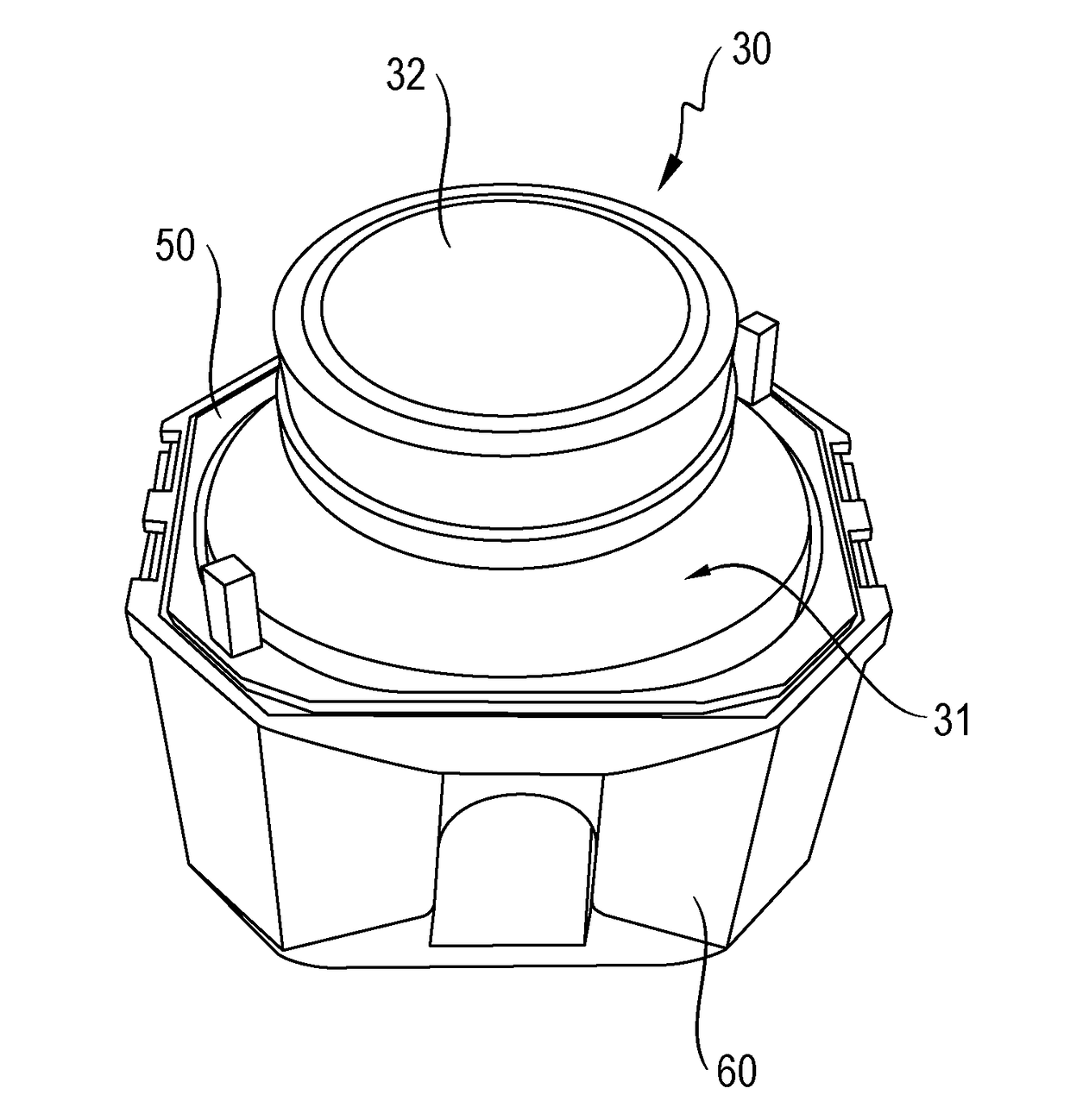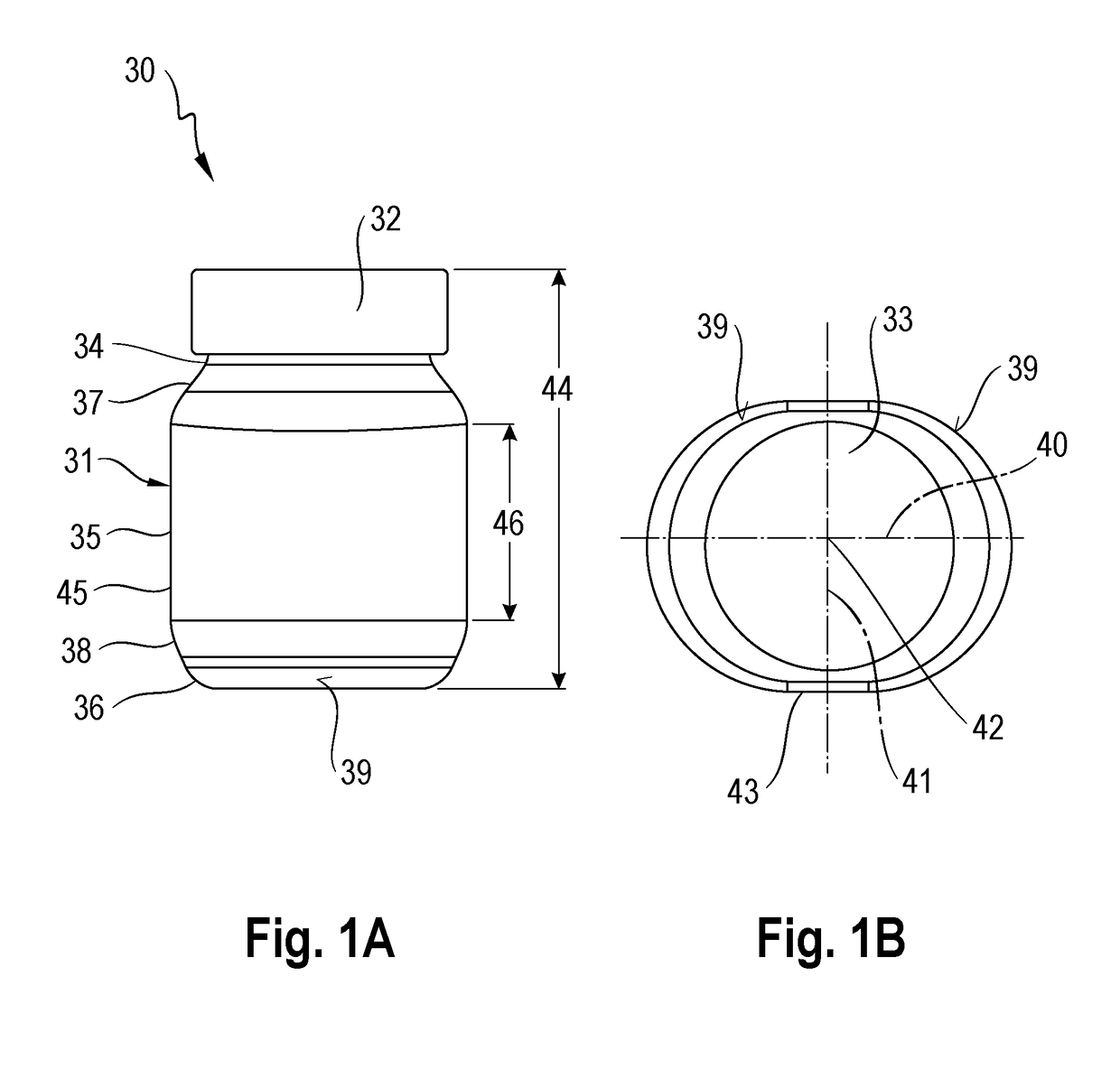Centrifuge vessel assembly
a technology for centrifuges and vessels, applied in centrifuges, laboratory glassware, chemistry apparatus and processes, etc., can solve the problems of high acceleration force limits, time-consuming centrifugation process, and more difficult cleaning, so as to achieve large capacity and reduce yield loss
- Summary
- Abstract
- Description
- Claims
- Application Information
AI Technical Summary
Benefits of technology
Problems solved by technology
Method used
Image
Examples
Embodiment Construction
[0023]FIG. 1 shows a first exemplary embodiment of a centrifuge vessel 30 in two views, of which FIG. 1A is a side view of the centrifuge vessel 30 and FIG. 1B is a top view of the centrifuge vessel 30. The centrifuge vessel 30 comprises a vessel body 31 comprising an opening that can be sealed by means of a closure element 32 in the form of a screw-on lid. For this purpose, the lid 32 is of a circular cross-section, as shown in FIG. 1B.
[0024]FIG. 1A shows the vessel body 31 comprising a top portion 34 located in the proximity of the opening, a middle portion 35, and a bottom portion 36. The top portion 34 merges continuously into the middle portion 35 by way of a first transition zone 37, and the middle portion 35 merges continuously into the bottom portion 36 by way of a second transition zone 38. The vessel body 31 has an oval cross-sectional area 39 in the top portion 34, in the middle portion 35, and in the bottom portion 36, and the bottom portion 36 has a smaller peripheral c...
PUM
 Login to View More
Login to View More Abstract
Description
Claims
Application Information
 Login to View More
Login to View More - R&D
- Intellectual Property
- Life Sciences
- Materials
- Tech Scout
- Unparalleled Data Quality
- Higher Quality Content
- 60% Fewer Hallucinations
Browse by: Latest US Patents, China's latest patents, Technical Efficacy Thesaurus, Application Domain, Technology Topic, Popular Technical Reports.
© 2025 PatSnap. All rights reserved.Legal|Privacy policy|Modern Slavery Act Transparency Statement|Sitemap|About US| Contact US: help@patsnap.com



